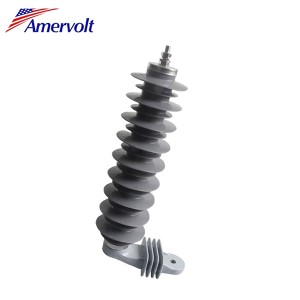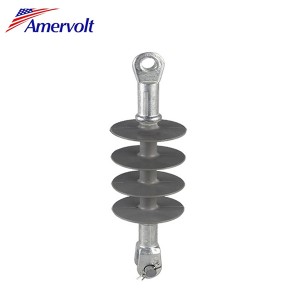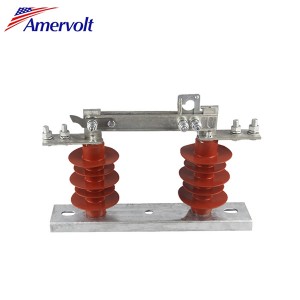Production process of rubber products
1. Basic process
With the rapid development of modern industry, especially the chemical industry, there are many kinds of rubber products, but the production process is basically the same. The production process of general solid rubber (raw rubber) as raw materials includes:
Raw material preparation→plasticizing→mixing→forming→vulcanization→resting→inspection

2. Raw material preparation
The main materials of rubber products are raw rubber, compounding agents, fiber materials and metal materials. Raw rubber is the basic material; the compounding agent is an auxiliary material added to improve certain properties of rubber products; fiber materials (cotton, hemp, wool and various artificial fibers, synthetic fibers) and metal materials (steel wire, copper wire) It is used as the skeleton material of rubber products to enhance mechanical strength and limit product deformation.
In the raw material preparation process, the ingredients must be weighed accurately according to the recipe. In order for the raw rubber and the compounding agent to be evenly mixed with each other, certain materials need to be processed:
The raw rubber should be dried in a 60-70℃ drying room, and then cut and broken into small pieces;
Large compounding agents such as paraffin, stearic acid, rosin, etc. should be crushed;
If the powdered compounding agent contains mechanical impurities or coarse particles, it needs to be screened and removed;
Liquid compounding agent (pine tar, Gumalon) needs heating, melting, evaporating water, filtering impurities;
The compounding agent should be dried, otherwise it will be easy to agglomerate, it will not be evenly dispersed during mixing, and bubbles will be generated during vulcanization, which will affect the product quality;

3. Plasticizing
Raw rubber is elastic and lacks the necessary performance (plasticity) during processing, so it is not easy to process. In order to improve its plasticity, it is necessary to plasticize the raw rubber; in this way, the compounding agent is easily dispersed evenly in the raw rubber during mixing; at the same time, it also helps to improve the permeability of the rubber during the calendering and molding process (infiltration Fiber fabric) and forming fluidity. The process of degrading the long-chain molecules of raw rubber to form plasticity is called plasticizing. There are two methods of raw rubber smelting: mechanical smelting and thermal smelting. Mechanical plasticizing is to make the long-chain rubber molecules degraded and shorten from a high elastic state to a plastic state through the mechanical extrusion and friction of the plasticizer at not too high temperature. Thermoplastic smelting is the introduction of hot compressed air into the raw rubber. Under the action of heat and oxygen, the long-chain molecules are degraded and shortened, thereby obtaining plasticity.
4. Mixing
In order to adapt to various conditions of use, obtain various performances, and to improve the performance of rubber products and reduce costs, it is necessary to add different compounding agents to the raw rubber. Mixing is a process of mixing the raw rubber after mixing with the compounding agent and placing it in the rubber mixer, through mechanical mixing, so that the compounding agent is completely and evenly dispersed in the raw rubber. Mixing is an important process in the production process of rubber products. If the mixing is not uniform, the role of rubber and compounding agent cannot be fully exerted, which affects the performance of the product. The rubber compound obtained after mixing is known as rubber compound. It is a semi-finished material for manufacturing various rubber products, commonly known as rubber compound. They are usually sold as commodities. Buyers can use the rubber compound to directly process and mold it. Required rubber products. According to the different formulations, there are a series of different grades and varieties with different properties to provide choices.
5. Forming
In the production process of rubber products, a calender or an extruder is used to make a variety of shapes and sizes in advance, which is called molding. The molding methods are:
Calendering is suitable for manufacturing simple sheet and plate products. It is a method of pressing the mixed rubber into a certain shape and a certain size of film by a calendering machine called calendering. Some textile products used in rubber products (such as tires, tapes, hoses, etc.) must be coated with a thin layer of glue (the glue on the fibers is also called glue or rubbing), and the glue application process is generally completed on the calender. The fiber material needs to be dried and dipped before calendering. The purpose of drying is to reduce the moisture content of the fiber material (so as not to evaporate and foam the water) and increase the temperature of the fiber material to ensure the quality of the calendering process. Dipping is a necessary process before hanging glue, the purpose is to improve the bonding performance of fiber material and rubber compound.
Extrusion molding For more complex rubber products, such as tire tread, rubber tube, metal wire surface coating needs to be manufactured by extrusion molding. It is a method of putting plastic with a certain plasticity into the hopper of an extruder and extruding it through a variety of mouths (also called templates) under the extrusion of a screw to extrude it. Before, the rubber compound had to be preheated to make the rubber compound soft and easy to extrude, so as to obtain rubber products with smooth surface and accurate size.
Molding molding You can also use the molding method to manufacture certain complex shapes (such as leather cups, sealing rings) of rubber products, with the help of the formed negative and positive molds, the rubber material is placed in the mold and heated for molding.

6, vulcanization
The process of converting plastic rubber into elastic rubber is called vulcanization. It is the addition of a certain amount of vulcanizing agent (such as sulfur, vulcanization accelerator, etc.) to the semi-finished product made of raw rubber (in the vulcanization tank). Heating and heat preservation at temperature make the linear molecules of the raw rubber cross-link to form a solid network structure by forming “sulfur bridges”, so that the plastic compound becomes a highly elastic vulcanized rubber. Because the cross-linking bond is mainly composed of sulfur, it is called “vulcanization.” With the rapid development of synthetic rubber, there are many varieties of vulcanizing agents. In addition to sulfur, there are organic polysulfides, peroxides, and metal oxides. Wait. Therefore, the process of converting plastic rubber with a linear structure into elastic rubber with a three-dimensional network structure is called vulcanization. Any substance that can function as a “bridge” in rubber materials is called a “vulcanizing agent.”
Vulcanized elastic rubber is called vulcanized rubber, also known as soft rubber, commonly known as “rubber”. Vulcanization is one of the most important processes in rubber processing. Various rubber products must be vulcanized to obtain ideal performance. Unvulcanized rubber is of little use value in use, but under-sulfur (not enough vulcanization degree, vulcanization time is not enough to reach the best state) and over-sulfur (vulcanization time exceeded, performance significantly reduced) both make Rubber performance is reduced. Therefore, the vulcanization time must be strictly controlled during the production process to ensure that the vulcanized rubber products have the best performance and the longest service life.
7. Auxiliary measures
In order to achieve performance, additional measures should be added to the production process:
7.1 Increase the strength-with hard carbon black, mixed with phenolic resin;
7.2 Increased abrasion resistance-equipped with hard carbon black;
7.3 High airtightness requirements-less use of high volatile components;
7.4 Increasing heat resistance-using a new vulcanization process;
7.5 Increase cold resistance–Through the untwisting and setting of raw rubber to reduce the tendency to crystallize, use low temperature resistant plasticizer;
7.6 Increase flame resistance-no flammable additives, less softener, flame retardant (eg antimony trioxide)
7.7 Increasing oxygen resistance and ozone resistance-using diamine protective agent;
7.8Improve electrical insulation-Equipped with high-structure filler or metal powder, with antistatic agent;
7.9 Improve magnetic properties–Strontium ferrite powder, aluminum nickel iron powder, iron barium powder, etc. are used as fillers;
7.10 Improved water resistance-using lead oxide or resin vulcanization system, equipped with fillers with low water absorption (such as barium sulfate, clay);
7.11 Improve oil resistance-fully cross-linking, less plasticizer;
7.12 Improve acid and alkali resistance-multi-purpose filler;
7.13 Improve the high vacuum performance-with low volatile additives;
7.14 Reduced hardness–filled with a large amount of softener
Post time: Jul-17-2020
